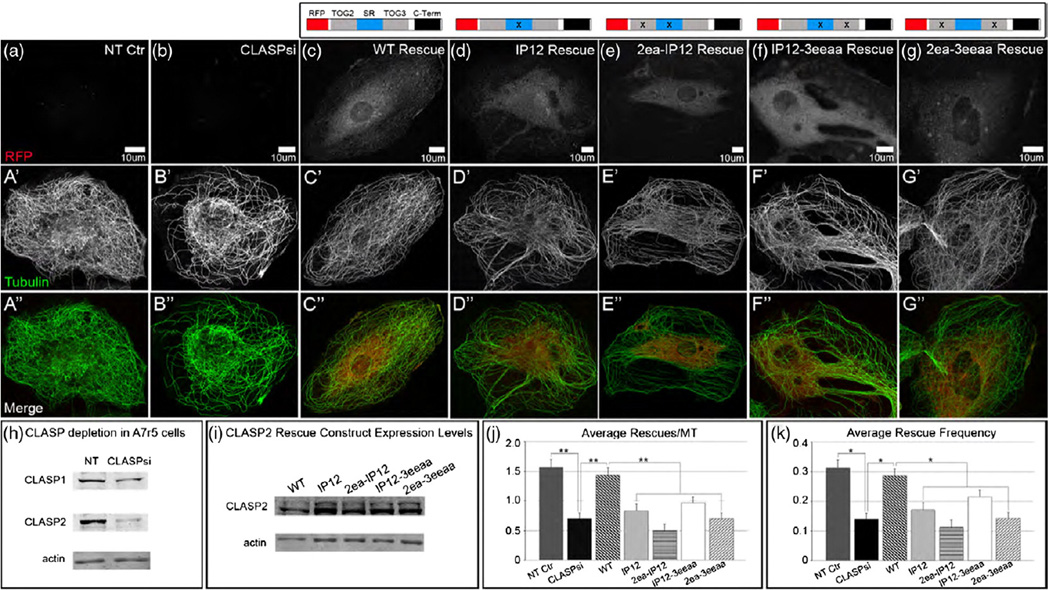Fig. 8.
MT network organization requires CLASP MT binding and EB binding. (a–g″) A7r5 cells expressing CLASP2 mutants (a–g, grayscale; a″–g″, red), immunostained for tubulin (a’–g’, grayscale; a″–g″, green). Confocal stack maximum intensity projections. N-terminally tagged RFP-CLASP2 rescue constructs with mutations in either TOGs and/or the EB-binding region. (a–a″) NT control cells have a highly organized and dense MT network when CLASPs are present. (b–b″) MT network is hindered and random in CLASP-depleted A7r5 cells (CLASPsi = mixture of siRNAs against CLASP1 and CLASP2). (c–c″) MT network organization and density is restored in CLASP-depleted cells expressing a non-silenceable RFP-fused wild-type (WT) CLASP2 rescue construct. (d–g″) CLASP-depleted cells expressing mutant versions of CLASP2 have MT network organization resembling that of CLASP-depleted cells, indicating a lack of rescue in the absence of EB and/or MT binding. (h) Western blot showing reduction of CLASP1 and CLASP2 levels in A7r5 cells treated for 72 h with a mixture of siRNAs against both CLASPs. (i) Western blot showing levels of endogenous CLASP2 (bottom band) and expression of RFP-CLASP2 constructs (top band) in untreated A7r5 stable lentiviral lines. In (h) and (i), actin was used as a loading control. (j and k) Analysis of average rescues per MT (j) and average rescue frequency per MT per minute (k) in NT control, CLASPsi and CLASP-depleted A7r5 cells expressing the respective RFP-CLASP2 rescue constructs (n = 30 for all conditions, three independent experiments, **p < 0.005 (j), *p < 0.05 (k), unpaired Student’s t-test).

